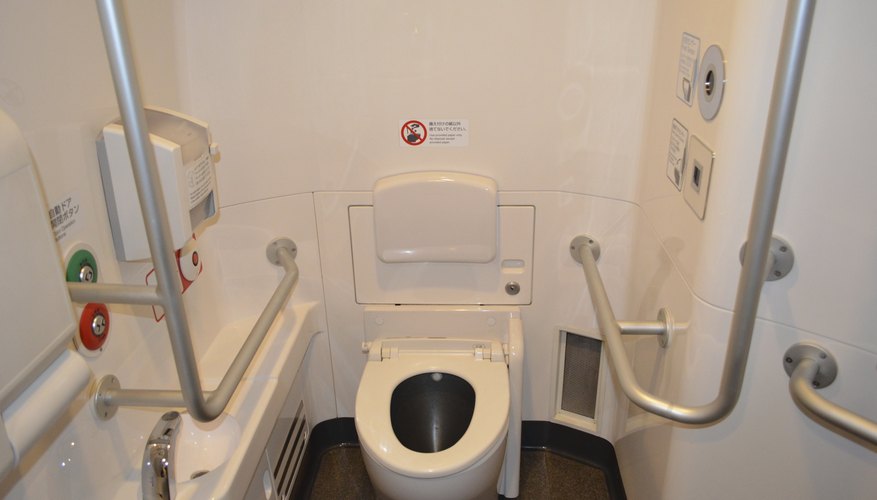Installing vinyl tile around a toilet may seem like a daunting task, but even an inexperienced homeowner can easily replace flooring in the bathroom. Vinyl tiles are adhesive backed and will stick to almost every surface, so no messy glues or grouting are required. The trickiest part about laying vinyl tile around a toilet involves the unique cuts and shapes of a toilet base.
- Installing vinyl tile around a toilet may seem like a daunting task, but even an inexperienced homeowner can easily replace flooring in the bathroom.
- Vinyl tiles are adhesive backed and will stick to almost every surface, so no messy glues or grouting are required.
Determine the square metres of your bathroom floor by measuring the length multiplied by the width. For example, a 3-by-3 m room has a surface area of 9 square metres.
Buy an extra five or six tiles to account for mistakes. It is easy to slip up when cutting the tiles to fit snugly around the toilet.
Be sure to install the vinyl tiling on a hard surface. You can drop tile on existing ceramic tile, hardwood floors and even a plywood sub-floor. You cannot install it on top of carpeting, since the adhesive won't stick.
- Be sure to install the vinyl tiling on a hard surface.
Remove all extra furnishings from around the toilet. Clean the flooring surface to remove any dirt, debris, grease or other substances.
Start by installing tile around the toilet. It's important to do this first, because it's difficult to install these tiles after the entire floor is done.
Line up a full square at the base of the toilet. Note the dimensions of the tile. Most are 30 cm by 30 cm (12 by 12 inches).
Measure the width of the toilet base -- usually this is 15 to 20 cm (6 to 8 inches) -- and mark it on the floor tile.
- Line up a full square at the base of the toilet.
- Measure the width of the toilet base -- usually this is 15 to 20 cm (6 to 8 inches) -- and mark it on the floor tile.
Draw the shape of the toilet front on the vinyl tile that you need to cut. This will look like half an oval.
Cut out the shape with a pair of heavy-duty scissors. Don't worry about the smoothness of the cut at this point.
Trace the tile cutout on an additional tile to use for the back of the toilet. Cut out the shape on the second tile.
- Trace the tile cutout on an additional tile to use for the back of the toilet.
Test out the cut by "connecting" one tile to the top of the other. The two tiles should form an oval opening for the toilet base in the centre of both tiles.
Fit both tiles in the front and back of the toilet. Both pieces should fit snugly and touch each other. If they do not touch, cut out the difference from a third tile to fill in the gaps on the left and right side of the toilet base.
Remove the adhesive backing and stick the tiles to the floor once you are satisfied with your cuts. It is OK if there is a small gap between the toilet and the tile.
With the caulking gun, squeeze a bead of caulk around the base of the toilet. This fills any gaps and creates a seal to stop any fluids from seeping under the floor tiles. Fill any other gaps between the tiles with caulk to help protect the adhesive under each tile.
Finishing laying the rest of the tile in the bathroom.
